With extra time in their hands, people headed out to their gardens in droves this spring. Many were thinking about growing food and herbs in a new light amid COVID and the early food shortages. We can take a few lessons from Native Americans and colonial settlers on Martha’s Vineyard who depended on their plants and their kitchen gardens for a multitude of medicinal, culinary and household purposes.
Colonial-era kitchen or dooryard gardens would have been planted near the house for convenience and protection from wildlife with vegetables, herbs, and flowers, and might be up to an acre in size, according to Karin Stanley of West Tisbury who has researched these plants for the Cooke House and Legacy Gardens project now under way in Edgartown. Stanley is working with the Martha’s Vineyard Museum and a group of dedicated people to recreate one of these early gardens. It was planted in June and features more than 50 plant varieties — 500 plants in total — in about 10 constructed beds next to the historic Cooke House.
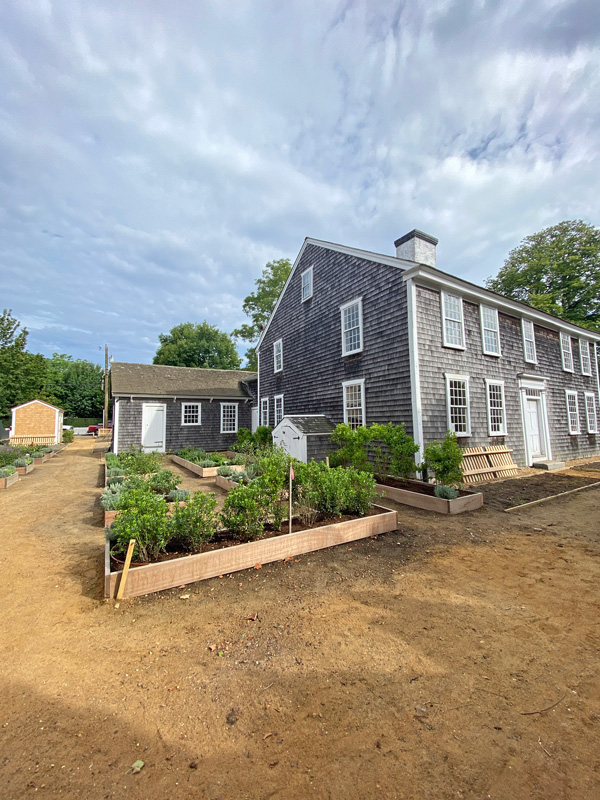
The site once housed the Martha’s Vineyard Museum, which relocated to Vineyard Haven 2018. Phil Wallis, the former executive director of the Museum, says he is staying on to help complete this project in the heart of Edgartown, which includes adding walkways, native plantings, interesting historical highlights, and plans to renovate the Cooke House and a few other structures on the site. Along with the herb gardens, there will be a contemplative garden, featuring a 6-foot historical millstone that will be used to create a fountain surrounded by trees and park benches. There are also plans to sandblast an 8 x 8-foot block of granite with an illustration that will depict Edgartown in the 1850s.
The whole site will be open to the public for free, like a park, to sit and enjoy the scenery, explained Wallis. “We’re creating a community asset around the oldest original structure in Edgartown.” You can read more about the overall project at mvmuseum.org under “Cooke House and Legacy Gardens.”
Stanley found no records of the Cooke’s specific kitchen garden plants, but she pulled together a list of essential and necessary culinary and medicinal herbs in 18th century New England that would have been maintained by the women in the household.
Roxanne Kapitan, of Oakleaf Landscaping in West Tisbury, took that list and organized the garden plantings. She came away from the project with an increased appreciation for plants and herbs. “I came to look at this idea of a colonial garden as a combination of a medicine chest, a spice rack, a broom closet, and a food market, all outside your kitchen door,” says Kapitan. “They could literally dash out — someone has a fever, someone has a rash, someone has a bellyache, someone just cut their finger open. Every single plant had a unique purpose for a person’s everyday needs.”
“We whittled down plants that were obtainable, workable, and readably able to be showcased in this location in a natural and attractive way,” explains Kapitan. There was a small historical garden at the Cooke House previously which Oakleaf removed and cared for until the new and expanded gardens could be planted. Oakleaf will be maintaining the gardens going forward.
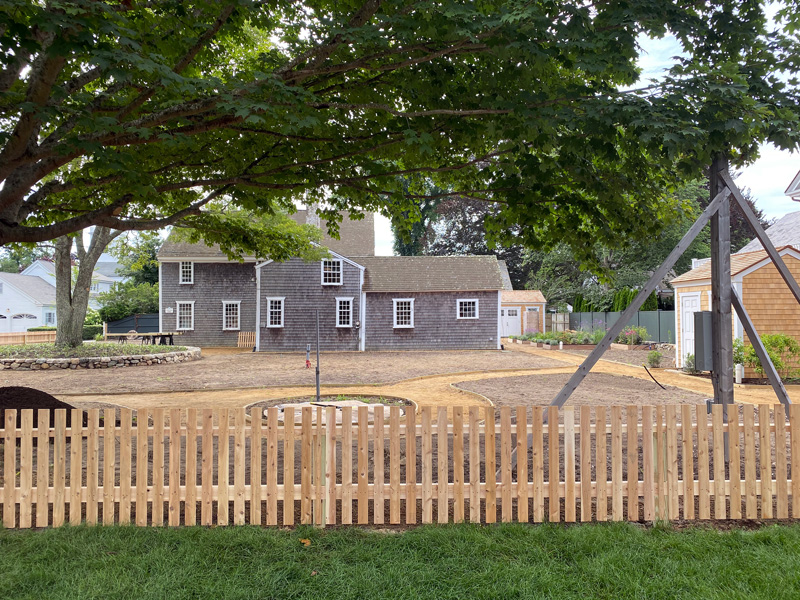
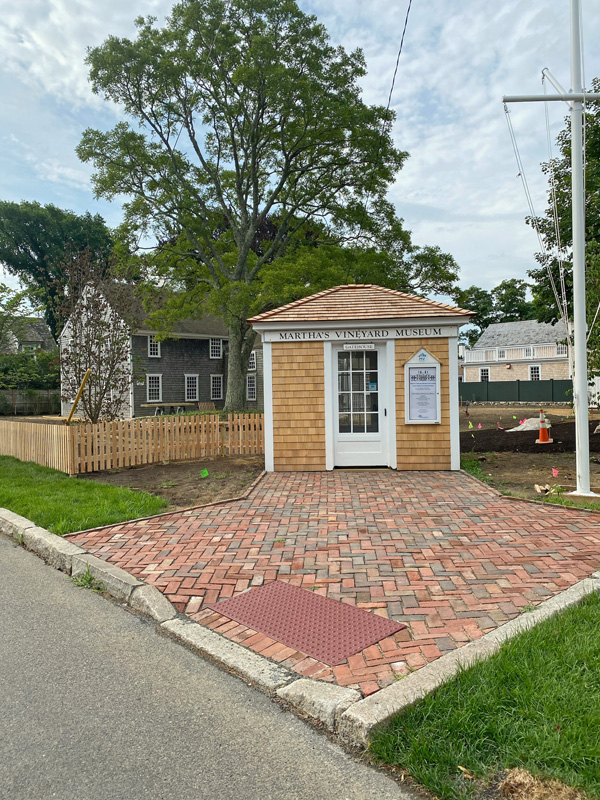
The gardens are organized by the uses of the plants. The main colonial garden, says Kapitan, includes plants introduced by colonists for medicinal use, such as borage, columbine, hyssop, lemon verbena, and feverfew. The bruised leaves of feverfew could be applied for a headache. It was also used for fevers and as a general tonic for nervousness and low spirits.
“Angelica was used when you have indigestion or gas,” explains Kapitan. Poppy was an another medically important plant. The opium from the poppy plant’s sap was used for pain. The poppy seeds were used in baking, as is done today.
The garden for culinary and medicinal use included many of the common “pot herbs” used for cooking, like oregano, marjoram, rosemary, tarragon, chives and thyme. The herb sections are most like what we consider a kitchen garden, according to Kapitan. Most of these cooking herbs also had medicinal uses.
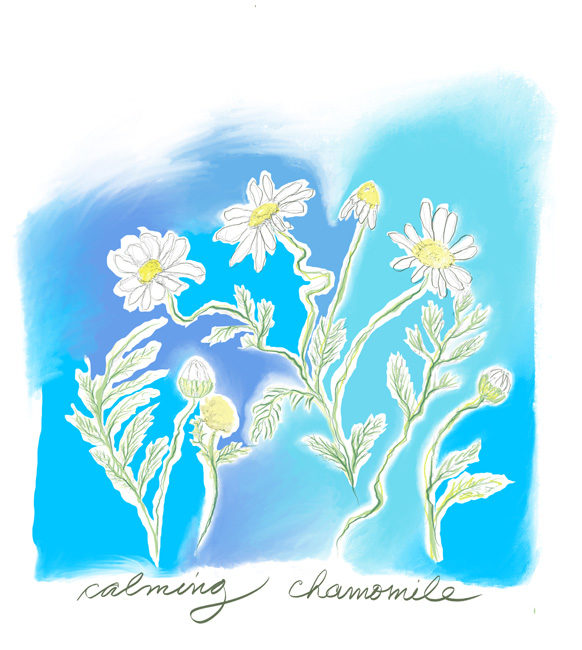
“Chamomile was used for stress, as was lavender,” says Kapitan. Thyme was considered helpful with dry coughs, whooping cough, and other chest disorders.
Rosemary is a good example of the multiple uses an herb might have, according to Stanley’s research. It had a reputation for strengthening memory, and was thought to ease pain in the teeth and gums and as being good for the stomach. Rosemary was used to repel moths from woolens and as an air freshener. Symbolically, it surfaced at weddings as a symbol of remembrance and love, and also at funerals so the deceased would not be forgotten.
One section of the garden, the Colonial Indigenous, was devoted to plants native to Martha’s Vineyard and the Northeast. Colonists learned about the medicinal benefits of these plants from the Wampanoag.
Coneflower, or echinacea, in this garden, was used by Native Americans as an almost universal remedy for wounds, toothaches, coughs, and snakebites, according to Stanley’s research. Today, we find echinacea used in products to boost the immune system. Medicines made from black cohosh in the indigeneous garden were widely used for “female complaints” including menopause, inducing birth, and menstrual cramps.
“It made me realize so many of our medicines today are derivatives of herbs that were effective, and a huge part is plant-based,” says Kapitan.

“The Cooke House path takes you back in time and moves you through the gardens from a historic point of view, which adds an educational cornucopia of information on such a small piece of land, says Nancy Vietor, an Edgartown resident who played a large role in facilitating and fundraising for the project and gardens. She says the museum has plans to offer programs focusing on the gardens and plants specifically. “There is a program center located in this garden for all of the planned activities. There can be programs on the plants that were used to make the tinctures, tisanes, salves and other medicines,” she says. “We can focus on harvesting herbs to make a culinary bouquet garni; to treat a wound, to fill sachets to repel insects; to ease aches and pains or dye bits of cloth in various colors. Each unique garden within the Legacy Gardens has several stories to tell and it’s exciting to have carefully chosen plant choices narrate these tales.”
Herbs were important in Colonial times to make tea for enjoying, as well as medicinal purposes. Boneset tea was used to treat a variety of ailments including colds and fevers, constipation,and rheumatism. Also native is bee balm, known as Oswego tea. A tea brewed from its leaves was used as an antiseptic mouthwash and treated sore throats and fevers. After the Boston Tea Party, when colonists boycotted English tea, bee balm replaced imported tea.
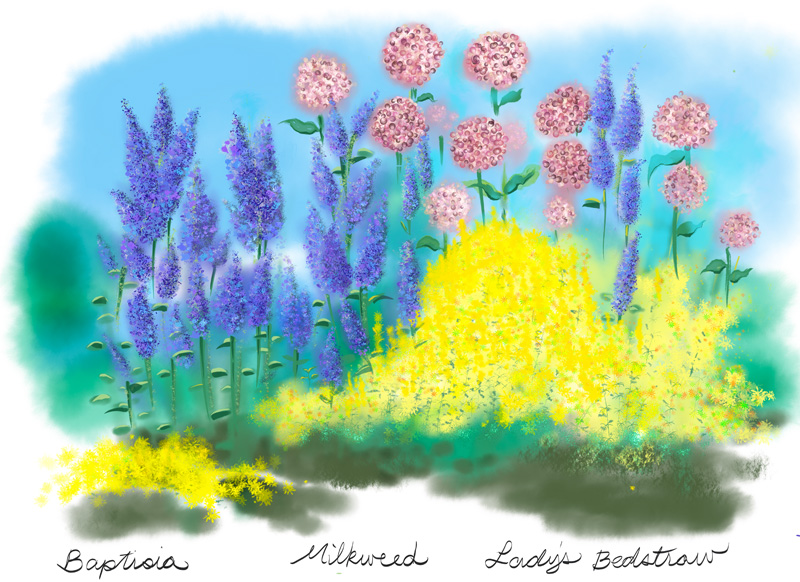
In the last garden designation, the Colonial Household Garden, plants were grown and harvested for use as fiber, dyes, insect repellents, and household cleaning and freshening. These feature a combination of plants brought from Europe and those found in native habitats. Colonists would have used roots of lady bedstraw as a black dye, and the flower shoots for yellow dye, even as a rinse for blond hair. Lady bedstraw was used to curdle cheese as well as to color cheese.
Baptisia in the household garden was a native plant, used to make a blue dye, thus it’s common name, False Indigo. Colonists boiled the leaves or root of baptisia and used it as an antiseptic, like witch hazel. This was helpful, says Kapitan, before the introduction of peroxide, if you had an infection.
“Another thing that surprised me in the household uses garden [is] our native milkweed. It was used for people who had asthma and anything like a lung ailment, even gallstones,” says Kapitan.
“For millenia we have had a relationship with plants, whether feeding us, healing us, uplifting us, curing us. The project made me see so clearly how plants were so woven into the fabric of colonial life. A lot of people have lost that connection,” Kapitan says.
“From my lens,” she continues, “the virus is bringing a lot of people back to appreciating and using and recognizing the incredible possibility of what plants have to offer. It wasn’t that long ago that everyone was connected to plants. People are re-awakening to the power of plants — the utility of them, and having a garden. It’s happening again, and that gives me hope.”

